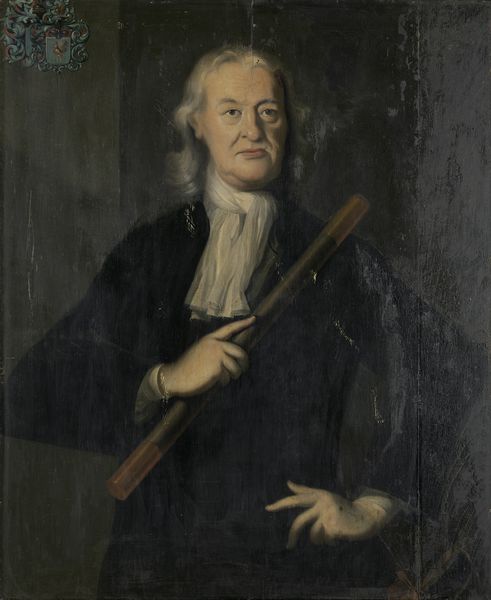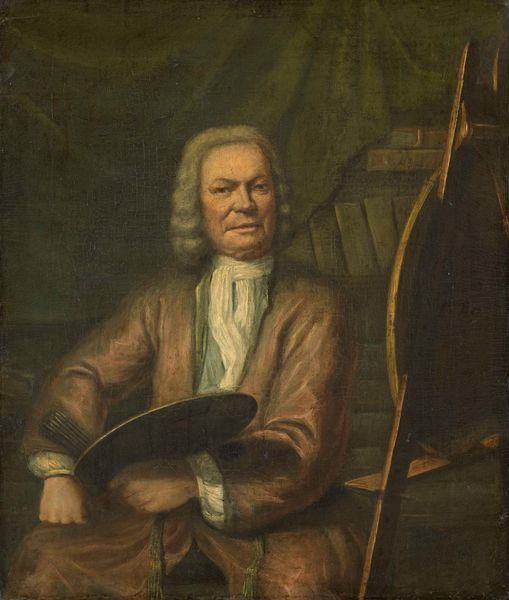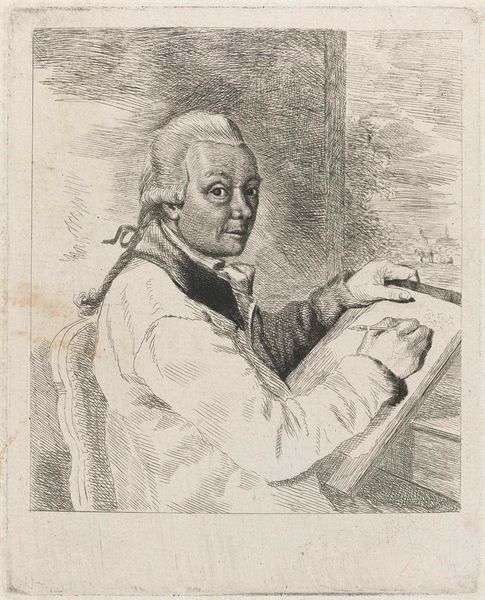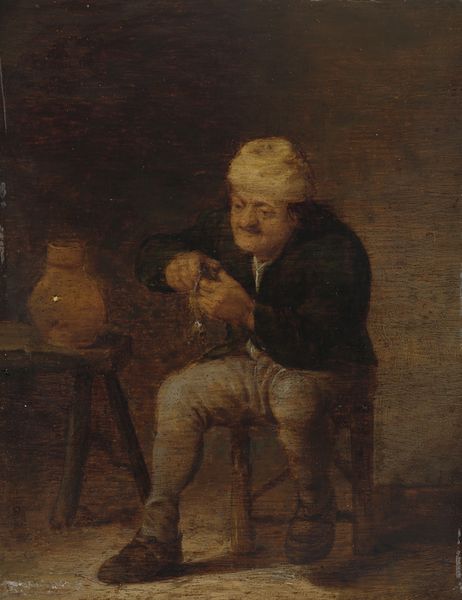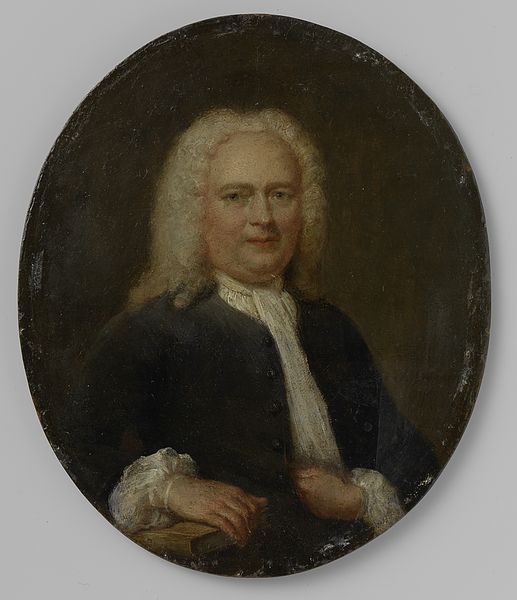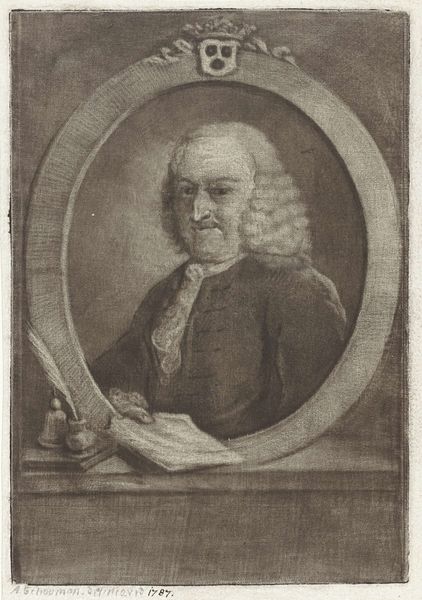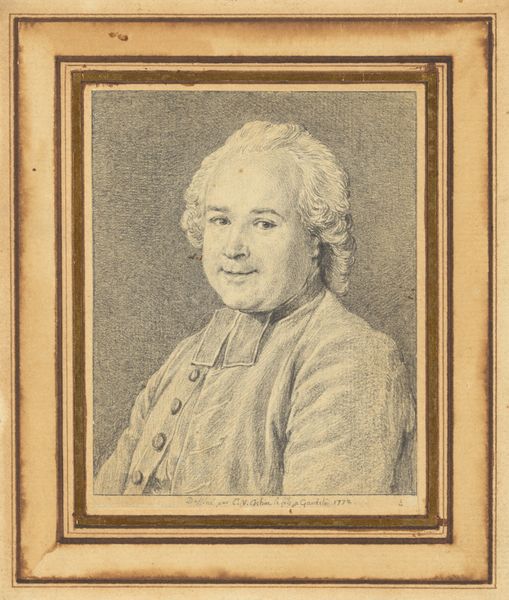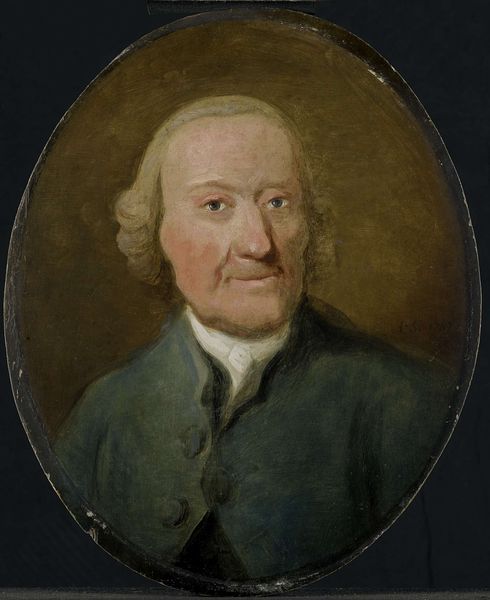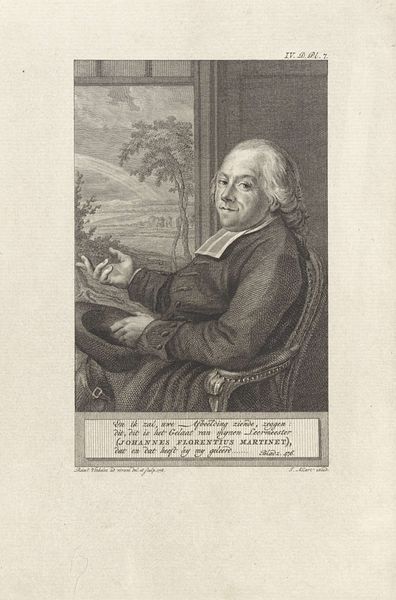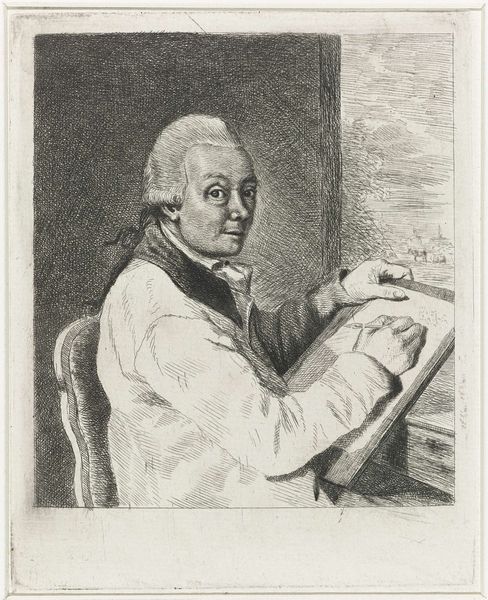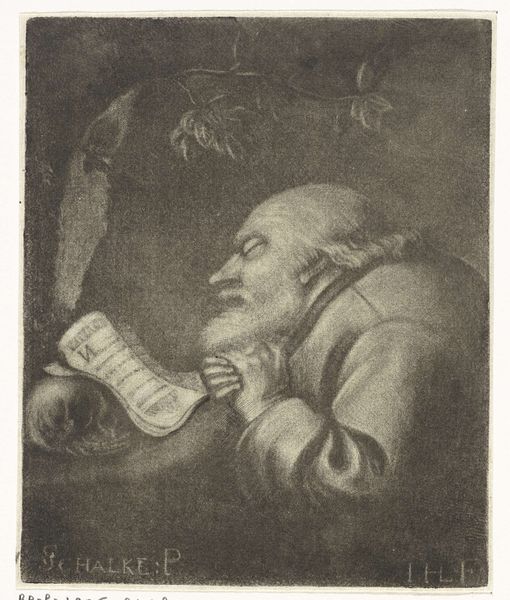
oil-paint
#
portrait
#
self-portrait
#
oil-paint
#
charcoal drawing
#
oil painting
#
romanticism
#
portrait drawing
#
history-painting
#
watercolor
Dimensions: height 34 cm, width 24 cm, depth 8 cm
Copyright: Rijks Museum: Open Domain
Curator: Here we have Jurriaan Andriessen's "Self-Portrait," believed to have been completed sometime in the early 1800s. It's an oil on canvas currently residing here at the Rijksmuseum. Editor: There's something immediately warm and inviting about it, despite the formal composition. The earthy tones and the soft light really draw you in. It feels intimate. Curator: The composition certainly directs our attention, doesn't it? Note the triangular structure created by the artist, his canvas, and his palette. These are all crucial signs to consider—his very means of artistic production are laid out for us. The gaze meets the eye. Editor: Absolutely. But beyond that initial structure, I’m interested in the materiality of the piece. Look at the way the brushstrokes capture the textures of the jacket, almost tactile. You can almost feel the roughness of the linen, or imagine the mixing of pigments to find this tonality. Curator: The impasto is certainly skillfully applied. But I think the key here lies in the interplay of signs within the image. The artist presenting himself *in the act* of creation invites us to decode his role and self-image. Notice how even his powdered wig seems to adhere to formal style? It's a declaration of his position in the art world. Editor: That powdered wig and formal jacket point to labor and class. Andriessen carefully manages his appearance and the presentation of his work here, almost self consciously marketing himself to his peers or even a patron. Who did he imagine would see this? Curator: Precisely! The work allows for considerations of the very fabric of art creation—the signifiers of identity that it carries. The painting posits itself in a historical and artistic lineage, thus defining Andriessen himself. Editor: But let's not forget the social context. Consider the labor involved in preparing the canvas, the grinding of pigments by assistants if he was privileged, even the acquisition of the raw materials. These details highlight the material underpinnings of artmaking, which too often gets obfuscated in favor of more idealist readings of self expression. Curator: That perspective illuminates new understandings, undoubtedly. In reflecting on its material processes, we acknowledge how it transcends pure form to also encompass the network of human labor that enables creative expression. Editor: Exactly. It becomes more than a study of aesthetic style; it’s a reflection of Andriessen’s reality as a producer of culture. Curator: Yes, an intersection of structure and context. A compelling invitation for the viewer to engage critically with both the art object and its surrounding world. Editor: Precisely, by exploring its materials we’re uncovering those broader realities it both reflects and shapes.
Comments
No comments
Be the first to comment and join the conversation on the ultimate creative platform.

